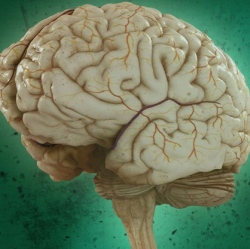
A team of graduate students at Johns Hopkins University has created a prototype device that delivers non-invasive brain stimulation to sufferers of Parkinson’s disease. The brain-zapping headwear, dubbed STIMband, helps to reduce the severity of symptoms without requiring a visit to a hospital or doctor’s office.
While the device has not yet been clinically trialled on humans, its design took out second place at the VentureWell BMEidea national design contest earlier this month as well as first place in the People’s Choice Award at Johns Hopkins’ Biomedical Engineering Design Day 2015.
Parkinson’s affects a million people in the United States and seven million people worldwide, with symptoms including uncontrollable tremors and slow movement. It cannot be cured, it gets worse over time, and many of its treatments become less effective after prolonged use.
The students took inspiration from one of the more invasive and advanced treatment options: deep brain stimulation. This involves a surgeon implanting electrical leads into the region of the brain that controls movement. A pulse generator inserted under the skin below the collarbone provides electrical signals that create a lesion, which blocks the abnormal nerve signals and thereby reduces the targeted symptom.
"We saw that this procedure is really invasive and can take 10 to 15 hours to complete," said team member Shruthi Rajan. "It’s also very expensive, and not all patients qualify for the surgery. We asked if there was a way to provide the same treatment in a less invasive way that doesn’t require brain surgery."
